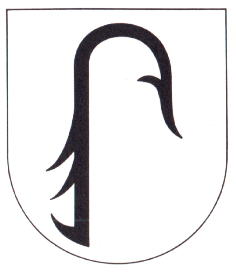Hesselhurst: Difference between revisions
Knorrepoes (talk | contribs) No edit summary |
Knorrepoes (talk | contribs) |
||
| Line 19: | Line 19: | ||
The arms were officially adopted in 1912, but the fish hook has been used as a village symbol since 1731, when it was used on a border stone. | The arms were officially adopted in 1912, but the fish hook has been used as a village symbol since 1731, when it was used on a border stone. | ||
In the mid 18<sup>th</sup> century the hook was also used on the local seals. In the 19<sup>th</sup> century the letters HS were added on the local seal, but these were removed in 1912. <br/>The hook itself probably is a symbol for the fisheries in the rivers in the area. However, it has also been speculated that it is a misinterpretation of the arms of [[Eckartsweier]], as until the 18<sup>th</sup> century Hesselhurst was part of the Eckartsweier estate and court. | |||
[[Literature]] : Huber, 1987 | [[Literature]] : Huber, 1987 | ||
Revision as of 06:25, 5 November 2013
| Heraldry of the World Civic heraldry of Germany - Deutsche Wappen (Gemeindewappen/Kreiswappen) |
HESSELHURST
State : Baden-Württemberg
District (Kreis) : Ortenaukreis (until 1973 Kehl)
Incorporated into : 1973 Willstätt
Official blazon
In Silber ein gestürzter schwarzer Angelhaken.
Origin/meaning
The arms were officially adopted in 1912, but the fish hook has been used as a village symbol since 1731, when it was used on a border stone.
In the mid 18th century the hook was also used on the local seals. In the 19th century the letters HS were added on the local seal, but these were removed in 1912.
The hook itself probably is a symbol for the fisheries in the rivers in the area. However, it has also been speculated that it is a misinterpretation of the arms of Eckartsweier, as until the 18th century Hesselhurst was part of the Eckartsweier estate and court.
Literature : Huber, 1987

